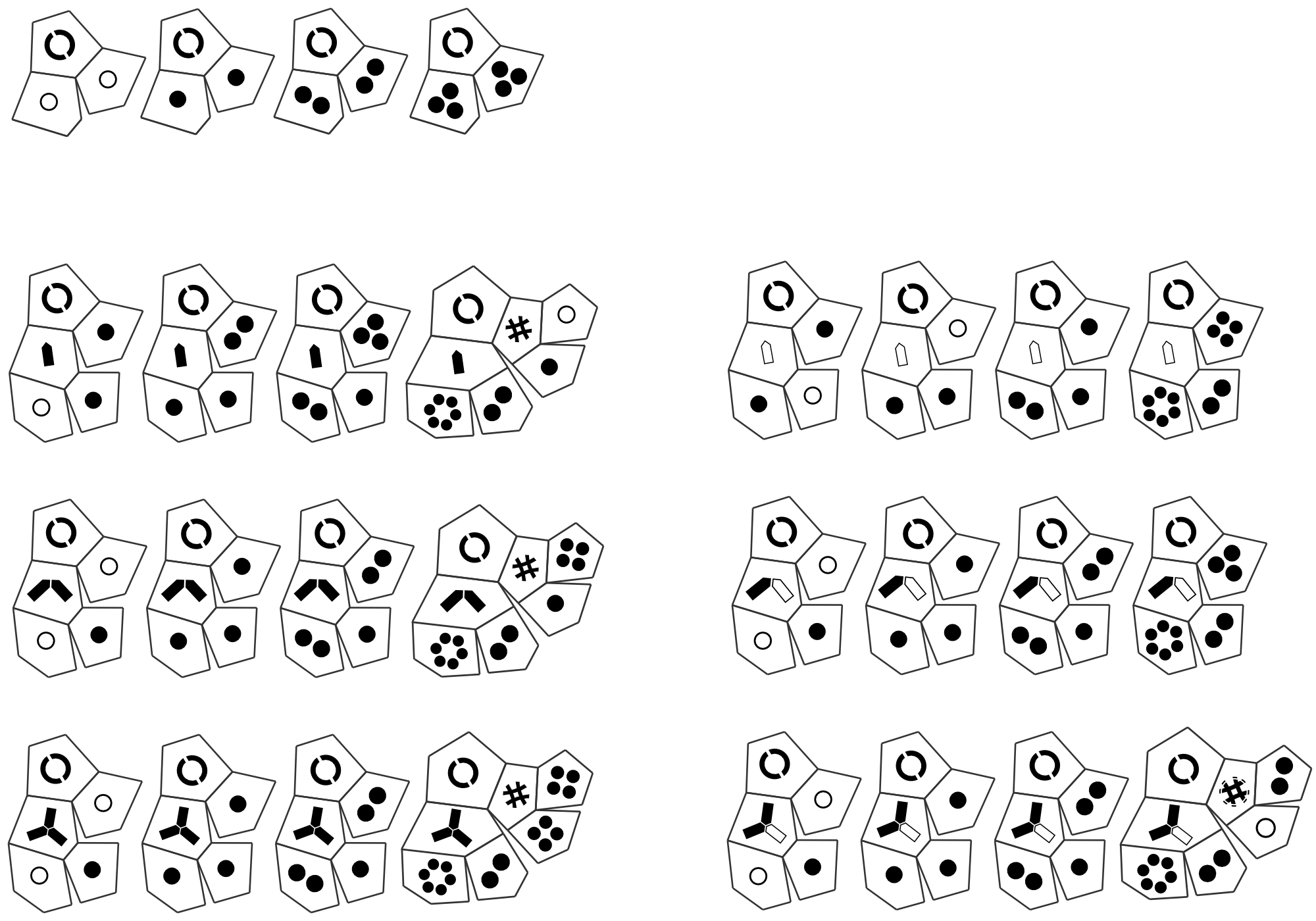I finished my tattoo last night. If you like puzzles, here’s a primer for the language, and the design itself. You’ll need some basic algebra for the primer, and a little domain knowledge–or a few Google queries–for the tattoo proper.


Basic hints
Orientation and scale are not important.
The positions of the twenty-eight primer expressions are not important, but I’ve arranged them suggestively to make the puzzle easier.
Suggestive hints
Each group of four expressions in the primer has a particular symbol in common.
Some cells touch only one cell. Others touch more than one cell. Which glyphs appear only at the edges? Which connect more than one cell?
Do the connected cells in an expression ever form a loop?
Which glyphs appear in black? Which have outlined counterparts?
Can you relate glyphs by their component shapes?
Leading hints
How would you represent large numbers in this language?
What’s the densest circle packing in the plane? We’ve seen six dots. How would it accommodate seven dots? Eight? Nine?
How do rows in the primer relate to one another? How do columns relate?
The # glyph in the bottom right of the primer has little cut-outs.
Pointed hints
Exponentiation has two inverses: logarithm, and root.
What integer is closest to the square root of six?
What integer is closest to log(6, 2)?
Equivalence relations aren’t always binary.
Domain knowledge
The number in this tattoo is something any physicist would recognize.
One solution for a planar light wave involves sinusoidal electric and magnetic fields at right angles to the direction of propagation.
Dude, nerdiest thing ever.